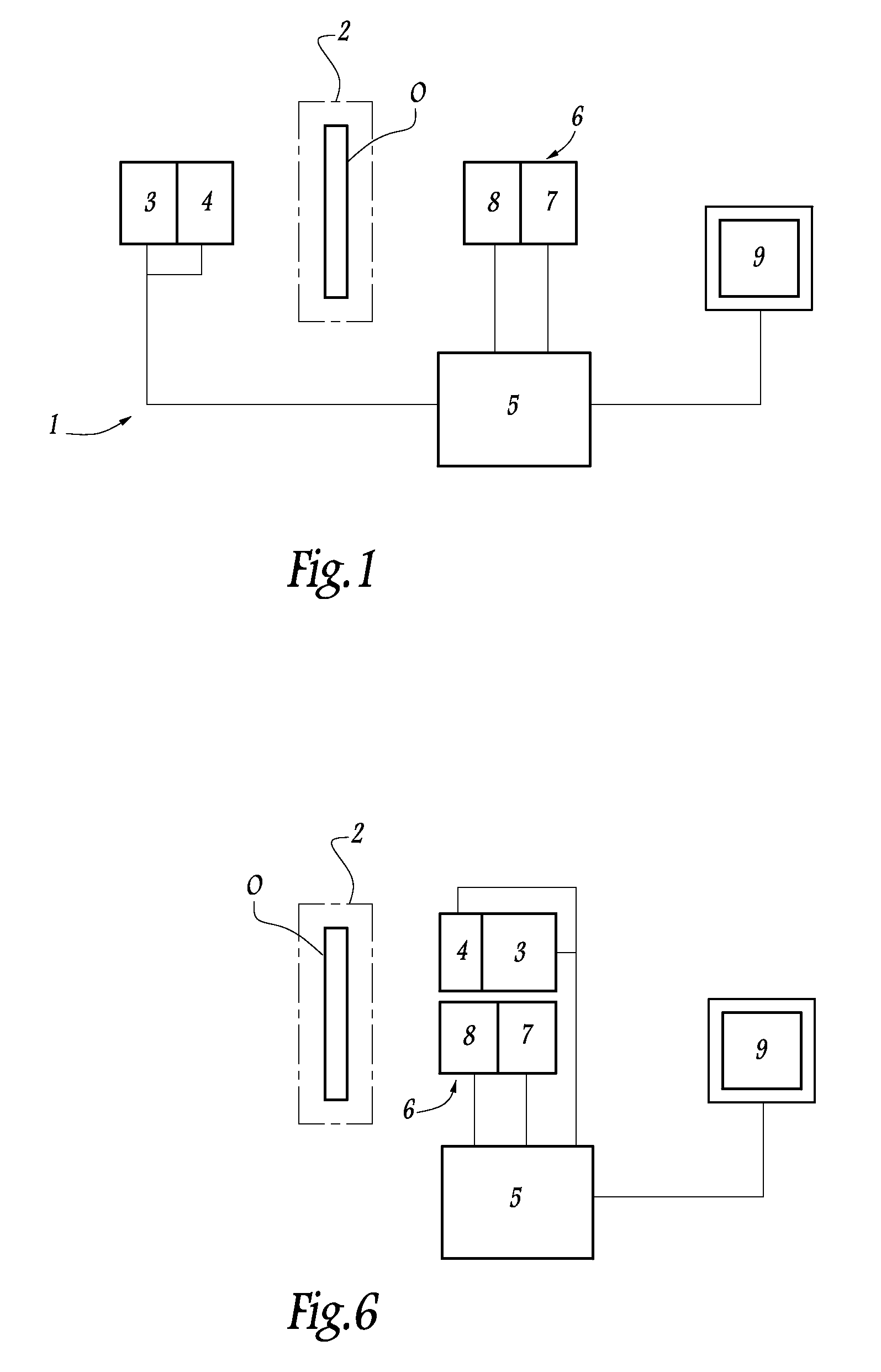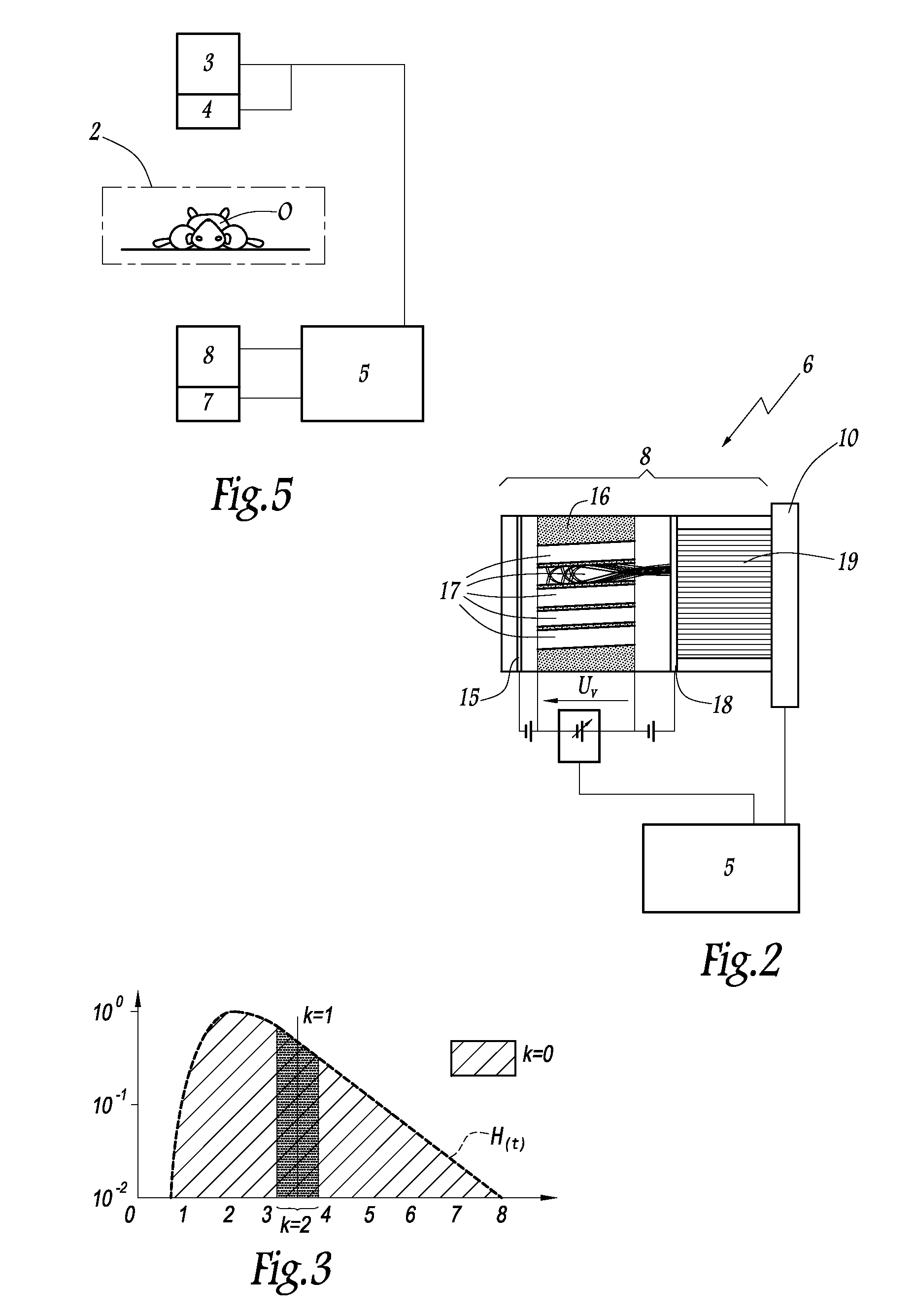Method and device for measuring optical characteristics of an object
a technology of optical characteristics and optical characteristics, applied in the field of diffuse optical imaging, can solve the problems of particularly long acquisition time, and achieve the effect of reducing resources or processing time and increasing the calculation speed
- Summary
- Abstract
- Description
- Claims
- Application Information
AI Technical Summary
Benefits of technology
Problems solved by technology
Method used
Image
Examples
Embodiment Construction
[0065]A measurement device according to the invention, as illustrated in FIG. 1 and denoted in its entirety by the reference 1, comprises a measurement area 2 depicted schematically by the dot-dash lines, in which an object O is placed, which object may be a specimen of biological or nature or else, optical characteristics of which have to be determined. In the case of in vivo measurement, the object O may also be formed by all or part of a living organism, such as a small animal or part of a human body.
[0066]The measurement device 1 comprises a light source 3 designed to emit light radiation toward the measurement area in order to illuminate the object O. The light source 3 is a pulsed source, preferably a subnanosecond pulsed source, and can generate a point of light on at least one face of the object O. It may for example comprise a light source combined with a laser cavity so as to emit pulsed radiation having a wavelength of 635 nm and a pulse repetition frequency of 80 MHz. Th...
PUM
 Login to View More
Login to View More Abstract
Description
Claims
Application Information
 Login to View More
Login to View More - R&D
- Intellectual Property
- Life Sciences
- Materials
- Tech Scout
- Unparalleled Data Quality
- Higher Quality Content
- 60% Fewer Hallucinations
Browse by: Latest US Patents, China's latest patents, Technical Efficacy Thesaurus, Application Domain, Technology Topic, Popular Technical Reports.
© 2025 PatSnap. All rights reserved.Legal|Privacy policy|Modern Slavery Act Transparency Statement|Sitemap|About US| Contact US: help@patsnap.com



